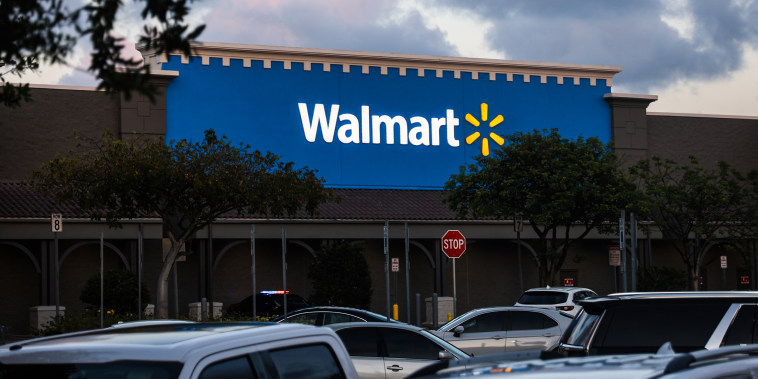Walmart said Wednesday that it will open five automated distribution centers for fresh food across the country, as the retailer chases efficiency and its online grocery business grows.
The discounter’s new facilities are roughly 700,000 square feet on average. Chilled and frozen areas have automation that stores and retrieves perishable items, such as strawberries and frozen chicken nuggets that are later sold at stores or added to customers’ e-commerce orders.
Walmart is the nation’s largest grocer, but it is modernizing its supply chain to keep up with customers who are increasingly picking up orders in the parking lot or getting groceries delivered to their doors. Store pickup and delivery drove the company’s 22% e-commerce gains in the U.S. in its most recent quarter.
The retailer has been automating supply chain facilities across the country, including distribution centers that handle shelf-stable items and fulfillment centers that help pack and ship online orders. Automation, along with higher-margin businesses like advertising, is a key reason why CEO Doug McMillon said in April 2023 that Walmart would grow its profits faster than sales over the next five years.
In an interview with CNBC, Dave Guggina, executive vice president of Walmart’s supply chain, said the automated facilities give the company a more precise picture of its inventory and allow it to get groceries to stores faster.
“We know what we own, in what quantity and where it is, all in near real time,” he said. “And we know that at a level of proficiency that is significantly improved than what we’ve been able to achieve with manual processes or legacy software.”
That allows Walmart to operate more cost-effectively by better predicting demand and reducing money spent on “safety stock,” extra product kept in a warehouse or back of the store to avoid running out completely, he said.
The high-tech facilities also allow more density. Each distribution center has twice the storage capacity and can process more than two times the volume of a traditional site, Guggina said.
Automation is contributing to higher spending at Walmart. The company has said its capital expenditures for the year will be 3% to 3.5% of net sales, which would translate to roughly $22 billion based on the midpoint of its guidance. The total, which includes its expansion of automation and hundreds of store remodels, is higher than the $12 billion that Walmart has historically spent on capital expenditures annually in recent years.
Walmart has said that by early 2026, about two-thirds of its stores will be serviced by some kind of automation and roughly 55% of fulfillment center volume will move through automated facilities. Unit cost averages could improve by about 20% by that time, the retailer has said.
Inside of the facilities, the automated storage and retrieval system can quickly grab the items that a store needs to restock its shelves and ferry them to an area where they’re put together into a dense pallet that’s ready to deliver to stores. Instead of relying on a worker to manually stack those items into a cube like a real-life Jenga puzzle, a robotic system helps push and stack them to put fragile items like eggs and peaches at the top.
Guggina said the automation can build customized pallets for a store that include only the specific items needed to fulfill online grocery orders. Those refrigerated or frozen products could be kept in the back of the store and used exclusively to fill those orders.
Guggina declined to say how much each facility costs to build and how that compares with traditional distribution centers for perishable items.
Walmart has already built and tested the first of the five automated distribution centers for fresh food in Shafter, California. It recently opened the second one in Lancaster, Texas, which is near Dallas. It plans to open the three others in Wellford, South Carolina; Belvidere, Illinois; and Pilesgrove, New Jersey.
Along with the new builds, Walmart is expanding four of its traditional distribution centers for fresh food to include automation. It will add about a half a million square feet to each of the facilities in Mankato, Minnesota; Mebane, North Carolina; Garrett, Indiana; and Shelbyville, Tennessee. It’s also retrofitting a legacy facility in Winter Haven, Florida.
The automation will bring changes for workers — and could reduce jobs at some facilities. Guggina said Walmart, which is the nation’s largest private employer with roughly 1.6 million workers, expects to have as many overall employees as it has now, or more, in the coming years.
But he added Walmart expects to increase productivity without hiring at the same pace as in the past. The roles it needs will change, too, he said. For example, it may need fewer people on the warehouse floor and more people to drive trucks in its fleet.
That will also be the case at the automated distribution centers for groceries, he said. Workers in the company’s traditional facilities act as “industrial athletes,” lifting hundreds of cases per hour and walking many miles each day. At the new facilities, he said, they play the part of supervisor.



























